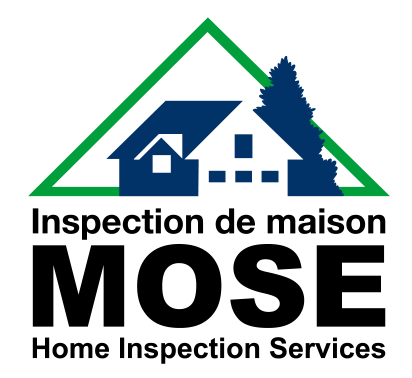Protect Your Family from Harmful VOCs
It’s a fact, even though the weather is great, we are all spending more time at home. Because of COVID working from home has become the norm. Our kids are studying at home, and we aren’t even going out for entertainment as much. Is it possible that spending all that time at home can be causing a potential health hazard?
We are all aware of the mental health risks associated with the effects of being cooped up and not getting enough social stimulation ( see CDC report ), but what about other dangers?

In this article we will discuss what VOCs are and how to protect you and your family from them.
Invisible Dangers
According to experts[1], air quality in your home could be 2 to 5 times worse than outside. In some cases, it could be much worse. In addition, according to the Canadian Centre for Occupational Health and Safety,[2] the potential health risks associated with “Sick Building Syndrome” (SBS) and can lead to severe illnesses like Legionnaires Disease.
As is so common, it is the most vulnerable among us, children, the elderly and those with underlying health problems that are most at risk when it comes to poor indoor air quality.

Since this is a serious problem for you and your family, we at Mose Home Inspection Services would like to keep you informed about what you can do to protect your home and loved ones.
What are the causes of poor indoor air quality?
In countries like Canada, where we have to seal up our homes to keep warm, we face a greater risk of having poor indoor air quality. The reason is that in our attempts to stay warm and conserve energy (especially in homes constructed during the energy crisis), we built them too air-tight. Because these “air-tight” houses don’t breathe properly, they hold in pollutants that cause poor indoor air quality. These pollutants are commonly called VOCs or Volatile Organic Compounds.

Common Causes of VOCs
Here are some of the more common causes of poor indoor air quality caused by VOCs;
- moisture and biological pollutants, such as moulds, mildew, dust mites, animal dander, and cockroaches
- high humidity levels, inadequate ventilation, and poorly maintained humidifiers and air conditioners
- combustion products, including carbon monoxide, from unvented fossil-fuel space heaters, unvented gas stoves and ovens, and back-drafting from furnaces and water heaters
- formaldehyde from durable-press draperies and other textiles, particleboard products, such as cabinets and furniture framing, and adhesives
- radon, which is a radioactive gas from the soil and rock beneath and around the home’s foundation, groundwater wells, and some building materials
- household products and furnishings, such as paints, solvents, air fresheners, hobby supplies, dry-cleaned clothing, aerosol sprays, adhesives, and fabric additives used in carpeting and furniture, which can release volatile organic compounds (VOCs)
- asbestos, which is found in most homes more than 20 years old. Sources include deteriorating, damaged and disturbed pipe insulation, fire retardant, acoustical material (such as ceiling tiles) and floor tiles
- lead, from lead-based paint, is created when removing paint by sanding, scraping and burning
- particulates from dust and pollen, fireplaces, wood stoves, kerosene heaters and unvented gas space heaters and
- tobacco smoke, which produces particulates, combustion products and formaldehyde.

What Are the Danger Signs?
Here are a few signs that you may have an indoor air quality problems;
- Dryness and irritation of the eyes, nose, throat, and skin
- Headache
- Fatigue
- Shortness of breath
- Hypersensitivity and allergies
- Sinus congestion
- Coughing and sneezing
- Dizziness
- Nausea
Take Action – Reduce the Risks Signs?
Here are a few signs that you may have an iHere are some steps you can take to reduce VOCs in your home:
- Choose your paint wisely.
When redecorating, consider choosing paints with low VOCs as shown through labels that are designated ‘low VOC’, ‘No VOC’, ‘Zero VOC’ etc. - Keep your environment dry.
Consider a good dehumidifier in wet basements. If there has been water damage to carpets or furniture, consider removing them. Check air-conditioners and vents for water build up that will promote mould activation. - Furniture, cabinets & carpets.
The chemicals used in manufacturing kitchen cabinets, carpets and much of the furniture we buy emit gasses (off-gassing) that contribute to poor air quality. Select products that meet current standards. - Cleaning products.
Despite efforts to regulate them problems persist. The cleaning products which you should watch out for most include detergents, air fresheners, furniture polish, oven cleaner, carpet cleaner and other varnishes. - Proper storage.
Keeping chemicals, cleaning products and paints in an unattached garage or shed is recommended. Wash or dispose of any contaminated clothing, rags or open containers immediately. - Properly ventilate.
The biggest factor to consider when reducing VOC exposure is the off-gassing process. Increasing ventilation through opening windows, clearing air vents, installing under door vents, are each small changes that can help combat high levels.
If you feel there is a risk of invisible and undetectable VOCs causing poor indoor air quality in your home, please get in touch with us at Mose Home Inspection Services.
Our trained technicians use the latest testing equipment that analyses the air in your home and tests for over 400 VOCs (volatile organic compounds, such as:
Alcohol, Aldehydes, Aromatics, Freons, Ketones, Esters, Ethers and Hydrocarbons, and much more.
Common sources of these compounds are:
Active mould, Building materials, Heating oil, Gasoline, Mothballs, Odorants (air fresheners), Paint
Solvents, Varnish, among many others.
Click here for more information about “Indoor Air Quality” and what is involved in booking an assessment for your home. To speak directly with a member of our customer service team call toll-free 1-855-426-1095 and we will guide you through the process.
At Mose Home Inspection Services, we care about you and the health of your family. Remember, when it comes to home inspections, nobody knows your home like Mose knows!
*Please note that other health issues can cause these symptoms. Therefore, please seek the advice of a licensed medical professional for advice.
Click the button below to get your quote and book a convenient time for your inspection using our online booking tool. Any time day or night.

